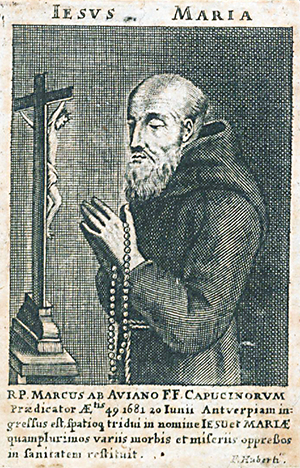The Friar Who Saved Christendom from Islam and Gave Us Cappuccino
The Italian Capuchin who is said to have inspired the creation of the world-famous beverage was beatified by John Paul II in 2003.

His name is most closely associated with the famous Battle of Vienna (1683) during which he greatly contributed to repel the Ottomans who aspired to conquer Europe.

The battle ended with the overwhelming victory of the Holy League and the withdrawal of the Turkish army.
Today, the Italian Capuchin friar is remembered for his life of holiness and the many miracles he accomplished during his earthly existence, arousing hundreds of conversions and vocations in his day and later. Pope St. John Paul II beatified him in 2003.
But very few people know that Marco d’Aviano is also at the origin of the creation of the world-famous cappuccino, and more indirectly of the croissant — two inevitable elements of today’s European breakfast.
The exact origin of cappuccino, closely linked to the Battle of Vienna, is still subject to debate. The most widespread theory is that after the capture of the Turkish camp at the end of the battle, the imperial soldiers found hundreds of bags of coffee, together with numerous other treasures left behind by the defeated army.
The bitterness of this product, quite unknown in the West at that time, had a repellent effect on the soldiers, so Blessed Marco advised them to mix the beverage with some milk to sweeten it. The delicious beverage, which also happened to have the same color as the friar’s habit, was then called kapuziner in his honor and rapidly spread through Vienna and the rest of the Holy Roman Empire.
More recently, in his book Memorie di terra e d'acqua: Note di storia e cultura del Veneto dalle origini alla caduta di Venezia (2014), Italian scholar Ugo Spezia mentioned a slightly different version of the story. According to him, some Greek and Serbian merchants, who already knew this beverage well, took possession of the abandoned bags of coffee after the battle and opened the very first coffee shops in Vienna. On this occasion, they created a new hot beverage made of milk and coffee to make it more suitable to the Western palate. The mixture’s name was meant to honor Blessed Marco, the most popular character of Vienna after the liberation of the region.
The historical record is more solid regarding the origin of croissant. It is related that shortly before the Sept. 12 battle, some bakers, while making bread overnight with the last bit of flour they had left, heard Turkish sappers digging tunnels below. They were able to raise the alarm on time and prevent the attack.
In gratitude for their contribution, imperial authorities allowed the bakers to immortalize the victory by making croissants (“kipferln” in German) in a half-moon shape – the symbol of the defeated Ottoman invaders.
In an interview released on the occasion of Marco d’Aviano’s beatification in 2003, the then-prefect of the Congregation for the Causes of Saints, Cardinal José Saraiva Martins, suggested that cappuccino was created as a tribute to the Capuchin thaumaturge, to accompany the newly created croissant.
Marco d’Aviano died of cancer Aug. 13, 1699, surrounded by his closest friends, the Holy Roman Emperor Leopold I and his wife Eleonor Magdalene of Neuburg. He was buried in the Kapuzinerkirche (the Capuchin church of Vienna), which also contains the Imperial Crypt, the principal place of entombment for the Habsburg dynasty and emperors of the Holy Roman Empire.
- Keywords:
- islam
- coffee
- church history














